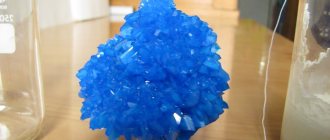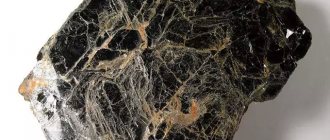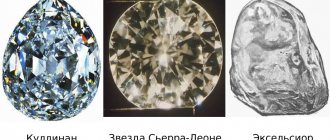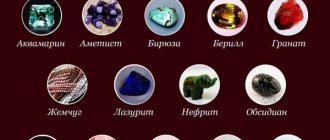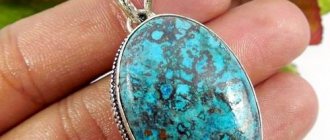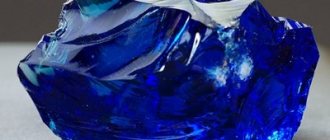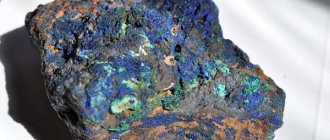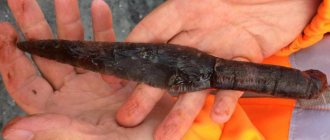Since ancient times, stones have been endowed by people with magical properties. It was believed that the one who had the most precious and natural stones was truly rich. Over time, this has not gone away. And today, one who has a large number of magnificent multi-colored shining stones is a rich person.
However, people have also found use for natural stones. In skillful hands, each miracle of rock takes on a truly majestic appearance. But what is this subject from a scientific point of view? Is a stone a substance or a body? What does it consist of and what varieties is it presented in, how is it used by humans and what names does it bear? Let's try to figure it out.
Is a stone a substance or a body?
To answer this question, one must generally decide what bodies and substances are? Teachers from the fifth grade answer this question to children in their natural history lessons.
All objects of living and inanimate nature are usually called bodies. While substances are precisely the material from which bodies are made. These concepts are closely interrelated. If you build a logical chain, it will take approximately the following form: bodies - substances - molecules - atoms - smaller structures within the nucleus.
By their nature, stones are products of rocks, pieces and fragments from them. Therefore, when answering the question: “Is a stone a substance or a body?” - you should pay attention to this fact. It should also be taken into account that the chemical nature of rocks is different, the substances from which they are composed are specific and not the same. Hence the conclusion: stones are both substances and bodies from the points of view of different sciences.
What is the material made of?
Products of natural origin are characterized by a solid, homogeneous structure of the material. Stones are mined in quarries in different areas, so even the same material can differ in color, characteristic pattern, properties, while maintaining its belonging to a certain group.
Briquettes of different sizes are cut from solid rocks, which are then subjected to different processing:
- grinding;
- circumcision;
- glossing, etc.
At the same time, the natural texture and ornament characteristic of a particular breed is preserved.
The cost of the processed material is very high, and the installation price of one square meter is almost comparable to the cost of the stone itself. This is due to the significant weight of the elements, which makes laying difficult and requires special skills and knowledge.
Attention
Natural decorative stones have a solid, homogeneous structure with a minimum number of defects or foreign inclusions, which provides them with high strength and reliability, which is reflected in the durability of the cladding.
Classification of stones
This question generally remained open for a long time, since different scientists interpreted it each in their own way. As a result, the classification of stones was given only much later, already in the 20th century. Each country has its own. For Russia, the system proposed by V. Ya. Kievlenko (1973) is considered acceptable.
- Precious, or jewelry. Examples: ruby, sapphire, emerald, diamond, beryl, alexandrite, opal, zircon, moonstone, aquamarine, topaz, tourmaline, peridon, amethyst, turquoise, chrysoprase, almandine, rosolite, spinel, citrine, demantoid, spodunite, pyrope. All of them are divided into stones of I, II, III and IV orders.
- Semi-precious, or jewelry-ornamental. Examples: rock crystal, agate, chalcedony, amber, hematite, cahonite, rauchtopaz, amazonite, labradorite, spar, quartz, rhodonite, common opal, beloporite, heliotrope, rose quartz. All are divided into elements of the first and second order.
- Ornamental. Examples: marble, fluorite, selinite, quartzite, granite, jasper, agalmatolite, ganite, onyx, jaspleite, listvenite, jet, obsidian, onyx.
In a broader sense, all types of stones can be reduced to three groups:
- natural;
- artificial;
- synthetic.
This classification is more chemical, since artificial and synthetic samples are obtained by laboratory methods.
The classes of stones that were listed above also have certain divisions within themselves. For example, natural ones have their own special classification and names.
Equipment
Depending on the type of finishing material and components for its manufacture, different sets of tools and available materials will be required.
For cement stones and gypsum tiles:
- form - silicone or polyurethane;
- container for mixing the solution;
- a water container to make it convenient to add the right amount;
- electric mixer or drill with screw attachment;
- trowel or spatula for leveling the solution.
For flexible stone:
- tools for working with liquid glue;
- metal scissors or regular scissors (depending on the brand and material of the fabric base);
- a small container with a dispenser for sprinkling stone dust or crumbs;
- durable plate with a smooth, hard surface.
Advice
All tools must be clean, without defects, then the products will turn out smooth, without flaws.
Stones from a chemical point of view
As already noted, by their nature the elements in question are rocks. Therefore, from a chemical point of view, a stone is a substance. The composition is usually determined by a combination of various metal oxides and their salts.
For example, the chemical composition of the well-known emerald and ruby is almost the same - aluminum oxide AL2O3. The color varies due to different impurities of other elements and light absorption capacity.
We can name several chemical groups of compounds that underlie the composition of all natural, including precious, stones:
- native elements (diamond - C);
- halides;
- sulfides;
- oxides;
- phosphates;
- borates;
- sulfates;
- feldspars;
- scapolites;
- sadolites;
- carbonates;
- silicates;
- grenades.
Each group has its own types of stones, numbering in hundreds of varieties. They can differ not only in composition, but also in color, shape, size, transparency, and density.
Chemical composition or chemical formula of basalt
There is a so-called “average chemical composition” of basalt - the same “average temperature in the hospital.” More precisely, the range. However, it is calculated so that there is a certain template or standard of basalt that can be guided or referenced.
How does “composition” differ from the “chemical formula of basalt”? Well, chemical formulas, firstly, refer to minerals , not rocks, and secondly, the chemical formulas themselves are of two types: empirical and structural.
Crushed basalt. Photo Teplokontakt
A few clarifications. Why do formulas apply to minerals, and the percentage of chemical compounds apply to rocks ? Because the mineral has not only a crystal lattice, but a sufficient homogeneity of composition, which cannot be said about a rock in which various minerals are adjacent to each other... like raisins in dough (if the structure is porphyritic), like raisins and other dried fruits and nuts of different types (if the structure is full-crystalline), well, plus the same thing, but discernible only under a microscope.
As for the empirical and structural formulas, the former only indicate the relationship between the atoms of different elements present in the mineral, while the structural formula at least somehow shows the connection of these atoms with each other.
Example: the empirical formula of orthoclase is K2Al2Si6O16, the structural formula is K2O Al2O3 6SiO2. Do you notice the difference? The number of atoms has not changed, but in the second case we see how they are structurally connected to each other.
So, you will find the chemical formulas of minerals below when we start talking about the mineralogical composition of basalt, but for now here is a table that gives the average percentages of certain chemical compounds in its composition:
| Oxide | Content, % |
| SiO2 | 47—52 |
| Al2O3 | 14—18 |
| CaO | 6—12 |
| FeO | 6—10 |
| MgO | 5—7 |
| Fe2O3 | 2—5 |
| Na2O | 1,5—3 |
| TiO2 | 1—2,5 |
| K2O | 0,1—1,5 |
| P2O5 | 0,2—0,5 |
| MnO | 0,1—0,2 |
Table from the Petrographic Code of Russia (taken from Wikipedia)
It is clear from the table that standard basalt does not go beyond the indicated percentages, but in nature there is no discreteness - there will always be transitional rocks between different classes - in acidity, in alkalinity, in the degree of metamorphism... Will it still be basalt or not?
Physical properties
From the point of view of the science of physics, a stone is a body. This means that its properties are characteristic, as for other similar objects: mass, melting and boiling points, density, color, taste, smell, etc.
However, everyone knows that a significant portion of stones have no taste, no smell, and are not capable of melting, but only crushing. Their colors are so varied that it is simply impossible to fit this indicator into a general framework. The palette of radiance of precious and semi-precious stones is complete: from black and white to bright blue, red, green, yellow and purple shades.
In general, we can distinguish several main groups of physical characteristics of stones, both natural and artificial (including precious ones).
- Strength and wear resistance. Based on this indicator, we can distinguish between strong (granite), medium (marble) and low strength (tuff) samples.
- Density. Corresponds to the previous indicator. They are divided into heavy - more than 2200 kg/m3 and light - less than this figure.
- Water absorption capacity, which is determined by the porosity of the structure.
- Acid resistance. The most resistant are granite and limestone. Marble collapses quite easily, as it enters into a chemical reaction with acids.
Thus, we can conclude that a stone is a substance or body of a natural nature, distinguished by a number of physical and chemical characteristics and of great practical importance in people’s lives.
Place of Birth
Marble is mined in deep mines or developed quarries.
In mineralogy there is no single definition of this stone. The term “marble” refers to all rocks formed from limestone that has been altered by natural forces. There are many such breeds, they are similar to each other, so they are distinguished only by their origin.
Groups by place of production:
- Carrara. The deposit is located in the Alps. Annual production is about 1 million tons .
Carrara marble is one of the most valuable varieties. It was this that Michelangelo used to create his famous sculptures.
- Jurassic is found in Bavaria. This species is denser than others. Shades: reddish, beige, gray-blue. The veins are green or white. The unique pattern of the stone was obtained due to the high percentage of fossils of biological organisms (algae, corals, sponges).
In terms of petrography, it is a marbled limestone because it has a fine-grained structure and contains fossils of organic origin. The name Jurassic marbled limestone, which is used in Russian geology, is more suitable for this mineral.
- Wallenfels is also mined in Bavaria. It has a full range of gray color, white spots, black and white veins.
- Grafenstein. The peculiarity of this reddish-gray marble is that after polishing, a bright, clear pattern with white, blue, gray inclusions and a moiré tint appears on its surface. It is mined in Germany.
- Sayan. Mining is carried out in the Sayan mountain range. The color of the stones is cream, pink, white.
- Ufaleysky is a gray stone with dark veins. Pattern in the form of stripes of gray-blue color. This rock is used as a facing material, and decorative objects are created from it. Place of extraction: Ural.
There are deposits of high-quality marble in Crimea, Transcarpathia, and the Donbass. In Uzbekistan, there are high quality stone samples with unique colors.
White marble is mined in Greece, France, Norway, USA, Cuba, and African countries. Russia also has its deposits, but some of them have not yet been developed.
There are more than twenty large marble deposits in the Urals, but only nine are mined. The deposits contain gray, yellow, black, pink-red marble.
More than fifty deposits have been explored in Western Siberia and Altai, but only three are being developed. White, lilac-pink, gray-flint marble is mined there.
Natural stones
Of course, there are too many of them to cover everything in a description. But we will try to consider the most common ones, those that are used by humans most often.
Any natural stone has a very beautiful and noble appearance. The photo of Stonehenge confirms this perfectly. Even though such samples do not have bright colors and radiance, they amaze with their majesty and splendor.
How do ingredients affect quality?
Many believe that the structure and composition of artificial finishing affect the performance of the material. The statement is incorrect because strength depends on maintaining the recommended production technology, and not on the components used. Particles of sand, foam glass, expanded clay balls, marble chips and other additives in a ratio that does not exceed the norm do not make the material less durable.
Similarly, the type of surface - smooth or textured - does not affect. At the same time, it is worth treating it with water repellents to increase its service life. Then this material will not be afraid of moisture and other adverse atmospheric influences. The quality of a decorative stone determines its resistance to fracture. If the tiles crumble easily, then the material is of low quality, and paint coatings or other methods of influencing the durability of the finish will not bring results.
Decorative stone, which can be of natural or artificial origin, is often used for cladding. This is a durable material that provides reliable protection to load-bearing structures. Artificial stone has less strength and durability than natural stone , but at the same time it has a lot of other advantages - a variety of colors, shapes and types of finishing elements, ease of installation.
Varieties
There are several popular examples of natural stones that are used by people in landscape design and construction due to their strength, beauty and environmental friendliness.
- Marble, which can be of different shades and patterns (layered or spotted). Since ancient times it has been used as a stone for architectural structures. From a chemical point of view, it is calcium carbonate CaCO3.
- Granite. It is a material for finishing floors, walls, cladding buildings, creating incredible works of art (monuments, monuments, etc.). From a chemical point of view, it is a combination of feldspars, quartz and dark-colored minerals.
- Sandstone. It is used by people for paving sidewalks, building stairs, and laying foundations. Used since ancient times. Chemical composition: quartz and feldspars.
- Travertine. An extremely dense and strong stone, surpassing marble in hardness. It also has good frost resistance. It is used in construction along with granite and marble. Composed of calcium carbonate minerals.
- Tuff. A beautiful porous stone, quite loose. Used for design of garden plots and cladding of buildings. Chemical nature - calcium carbonate, silicon compounds, volcanic ash and compacted lava.
- Jasper is a beautiful colored stone used for decorative finishes and jewelry. It is a mixture of silicon compounds and iron oxides.
There are also such common stones as slate, basalt, dolomite, limestone and others, which are widely used in construction and are generally used by humans. Natural stone, a photo of which can be seen in the article, is one of the most popular materials for interior decoration today.
APPLICATION
Serpentine box decorated with gold. Russia 10 x 8 x 6.5 cm
Due to their low hardness and good decorative properties, coils have been used for centuries as an ornamental and decorative facing stone, and in rare cases for stone carving and cameo making. In Europe, serpentinites have been known as an ornamental stone for over 400 years and have been used to make countertops and apothecary vessels.
In Russia, serpentine has long been used for cladding interiors in palaces, in combination with other types of colored stones or metal - for the manufacture of stone-cutting products, as well as Florentine mosaics. In the royal suburban palaces of Russia - Gatchina and Pavlovsk - there were sets of artistic work, carved from coils, used in palace everyday life.
Chrysotile asbestos is used as a fireproof material, heat insulator, and alkali-resistant material. The most valuable asbestos is with a fiber length >8mm, but it is also used with lengths
Coil - Serpentine - X
2-3Si2O5(OH)4, where
X
= Mg, Fe2+, Fe3+, Ni, Al, Zn, Mn
| Molecular weight | |
| origin of name | Serpentine was named in 1564 by George Bauer from the Latin word "serpens" - "snakes" due to its color similar to snake skin. |
| IMA class | Silicates |
Artificial stones: classification
Such structures can be divided into four main groups:
- acrylic;
- polyester;
- quartz agglomerates;
- cast marble.
The main feature of each of them is that they are created artificially by man, and therefore are not found freely in nature. Their properties are not inferior to, and sometimes even superior to, those of natural samples.
The main areas of use are the manufacture of countertops, sinks, laying out walls, floors, window sills and other surfaces.
Classification of granitoids by grain structure
The size and structure of grains differ from one another to different types of stone.
Based on this, granite comes in the following types:
- if the grain size does not exceed 2 mm - fine-grained ;
- grain size up to 5 mm - medium-grained ;
- coarse-grained appearance - more than 5 mm.
A fine-grained stone will have the highest level of resistance to mechanical damage. It is characterized by more uniform abrasion over time, resistance to winds and high temperatures. The fine-grained fraction is always the most expensive. It practically does not absorb water and is highly resistant to fire.
When building houses, coarse-grained granite is often used. It is cheaper, so after fires you can often see granite stairs that have cracked and are no longer usable.
Stones in water - types and properties
Sea stones are an important decorative element for aquariums, bathrooms, and room decoration in the appropriate style. They are very beautiful, varied in shape, size and color, and always attract attention.
What types of such structures exist?
- Shell rock. A natural stone formed over centuries from lime deposits and shell fragments of aquatic inhabitants of the oceans and seas. It has a beautiful milky shade, characteristics suitable for use in construction. Widely used in interior design decoration.
- Pearl. It is classified as a natural sea stone because it is a product of the vital activity of shell mollusks. Used in jewelry, it is highly valued for its strength, beauty and durability.
- Corals. You can also call them sea stones, because over time they turn into very durable structures formed by calcareous minerals, quartz and waste products of ocean inhabitants - polyps. Very varied in color, they are the most spectacular elements in decorating aquariums. Used in jewelry.
That is, sea stones are products of animal origin, formed under the influence of salty sea water and living organisms.
Clear advantages of acrylic stone for countertops
Acrylic sheet stone is the most widely used. It is a mass absolutely devoid of pores and depressions. A perfectly flat and smooth surface distinguishes artificial stone from natural stone. Pores are considered the main place where dirt accumulates and bacteria spread. Their absence contributes to a significant increase in the hygiene of the fabric and its durability. The material becomes as convenient as possible to maintain, since any contaminants can be instantly removed from the surface without any effort. When processing artificial stone, we use household chemicals that are familiar to us. Surface treatment does not lead to the formation of streaks and stains. This means that acrylic stone is not the best environment for microbial growth.
Such qualities make it possible to use canvases in the design of medical institutions and children's rooms, where hygiene and ease of cleaning the surface become the most important characteristics of the material.
Modern technologies make it possible to produce artificial stone in a rich color palette and give the surface the necessary texture. The greatest demand is for canvases that imitate natural materials. The attention of designers, in turn, is focused on the fantasy colors of acrylic stone. Such sheets allow you to turn the most daring and extraordinary ideas into reality.
The cost of acrylic stone is an order of magnitude lower compared to natural canvases. This can easily be explained by several reasons. Artificial stone, unlike natural stone, is produced in unlimited quantities. It does not need labor-intensive and costly research, which allows only small layers of material to be extracted from the bowels of the planet. Acrylic stone is produced using special equipment. The manufacturer independently sets the dimensions of the canvas, its colors and decorative design. The product receives ideal outlines and is completely ready for further use. It does not require complex additional processing. To make the surface attractive and practical, artificial stone is subjected to conventional grinding and subsequent polishing. In interiors, such canvases look stylish and expensive. Visually they cannot be distinguished from natural coating.
Acrylic stone is non-toxic. It is absolutely safe for humans and the environment. Equally important is its hypoallergenicity and environmental friendliness. When creating canvases, manufacturers use only environmentally friendly raw materials.
Decorative elements and architectural forms made from high-quality acrylic stone can now be seen in most nightclubs, medical institutions, retail and office buildings. Artificial stone firmly enters our lives and turns into the main decoration of the interior of the living space. Products made from it have status and functionality, conveying these qualities to the establishment itself. This makes every person think about purchasing sheets of acrylic stone to decorate their own home.
Mining process
Natural stone is mined everywhere and on all continents. Typically, transportation is not cheap (the cost is influenced not only by the quality of the rock, but also by the method of extraction and transportation costs: when extracting stones from the Earth, it is very important to preserve the appearance of the rock).
Since natural stones have different strength and hardness, different methods and equipment are used to extract them.
To do this, the deposit is opened up, creating a vertical shaft leading into the quarry. Many countries use the drill-and-blast method and the air cushion method: using drills, they make a hole, lay a charge, or pump in air.
As a result, the rock falls into pieces (even though these methods are cheap, the valuable properties of the rock are lost because it is heavily crushed, which leads to significant losses of raw materials). A more expensive, albeit effective method is the stone-cutting method: it allows you to extract natural stone without much loss.
Dimensions
Natural stones come in different sizes: the largest stone is a rock (formed after a mountain with a large number of cracks is destroyed), followed by blocks, blocks, monoliths and smaller pebbles. Those used in construction can be both small in size and real giants: a large stone often has dimensions exceeding 10 cubic meters (these monoliths are especially valuable due to the difficulty of extraction and transportation). Large stones that do not have cracks are divided into:
- Blocks are large rectangular stones, the size of which exceeds ten cubic meters, they are used when laying foundations, cyclopean masonry, and in monumental monuments;
- Monumental - from 5 to 10 m3, monuments, sculptures, ceilings are made from it;
- Unique - size 2x1x1.5 m, monuments, sculptures, columns are created from it;
- Piece - the size exceeds 1 m3, they make quads, sculptures, vases, bowls, as well as blocks, cobblestones, and natural stone borders.
The size classification does not end there, for example, the height of boulders ranges from 20 cm to 10 m, crushed stone ranges from 5 to 15 cm, pebbles range from 1 to 10 cm, and thin plates are considered the smallest (they are used for cladding, in mosaics and stained glass) – from 1 to 10 mm.
Rock hardness
Another important characteristic of natural stone materials is such properties as their strength and durability, that is, the ability to maintain their qualities regardless of external influences. According to this indicator, natural stones are divided into:
- Highly durable - they begin to collapse after six hundred years, these include quartzites and fine-grained granites;
- Durable - begin to crumble after two centuries (coarse-grained granites);
- Relatively durable - destruction begins after a hundred years (white marble, dense limestone, dolomite);
- Short-lived - they begin to crumble after a quarter of a century (colored marble, porous limestone, gypsum).
When characterizing a rock, its structure is also taken into account: the size and shape of mineral grains, the degree of crystallization, granularity (how evenly distributed the mineral grains are and whether there are voids). For example, in order to find out which stone is more durable, just look at its components: a fine-grained structure is stronger than a rock with large grains or an uneven structure.
A large stone, the grain structure of which is uneven, is poorly resistant to environmental influences: mineral grains of different sizes expand differently when the temperature changes, which is why large stones crack, and if water gets into the cracks, natural stones continue to collapse.
